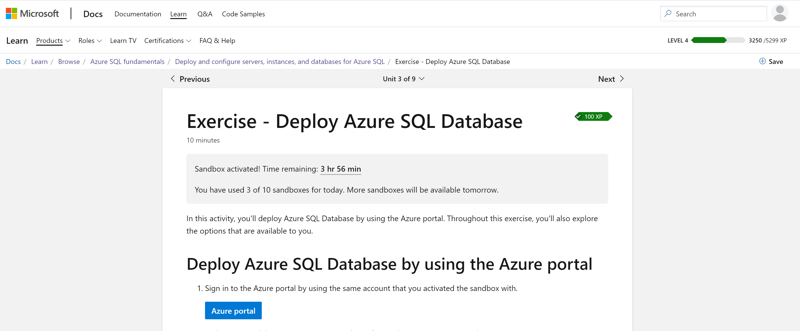on October 14, 2021
Have you been meaning to learn about SQL Server in the Azure cloud, but never seem to get around to it? It’s easy to be overwhelmed and not know where to begin.
I recommend you start with the Azure SQL Fundamentals Learning Path.
I stepped through this training this week and WOW, this is an incredibly high quality free course, complete with hands-on exercises in an online sandbox. I wish I’d done this sooner!

Top-notch quality
I say this is a high quality training because the course explains both general concepts and is also full of specific, useful, current details about Azure SQL.
Having written training modules myself, I know how difficult this is to maintain, especially given the rapid rate of evolution of cloud technologies. This Learning Path is clearly frequently updated and kept current by a team with very deep knowledge of Azure SQL.
Why learn Azure SQL?
It’s increasingly useful for database administrators and developers to understand PaaS (Platform as a Service) and IaaS (Infrastructure as a Service) cloud offerings and how these compare to installing and managing databases on-prem.
Even if your current job doesn’t work with databases in the cloud, learning the fundamentals of Azure SQL is likely going to help you out when it comes to seeking a promotion or landing a new job.
Note that I say fundamentals here. Not everyone needs to become an expert – but understanding the fundamentals is starting to become table stakes for database jobs.
What does ‘Azure SQL’ mean?
‘Azure SQL’ is a term that encompasses three types of offerings:
- Azure SQL Database: a PaaS offering (database as a service)
- Azure SQL Managed Instance: a PaaS offering (a SQL Server instance as a service)
- SQL Server running on Azure Virtual Machines: an IaaS offering
The course largely focuses on the details of Azure SQL Database and Azure SQL Managed Instances. This makes sense as SQL Server running on Azure Virtual Machines is broadly similar to running SQL Server on Virtual Machines in any environment.
Sandbox examples typically leverage Azure SQL Database in the course, which I suspect is because these databases spin up in a matter of minutes, while Azure SQL Managed Instances can still take up to six hours to spin up. I found this to be sufficient for learning fundamentals. The course provides a lot of details and screenshots about Azure SQL Managed Instances which I found very helpful.
How to tackle the learning path
I recommend following a strategy related to your level of experience and knowledge about SQL Server.
SQL Server beginners
If you are more of a generalist or are newer to SQL Server, this course can still be great for you but make sure not to get distracted by the details. There are tons of facts in this course which you could dig into and research for hours.
I recommend timeboxing your learning and focusing on the big picture – you’ll get a ton of value out of the course. You can always come back and dig into specific modules more afterward.
SQL Server experts
If you have a lot of experience with SQL Server, I suspect that you’ll find the course answers a lot of the questions you might have about performance, scalability, high availability, and disaster recovery. I encourage you to:
- Dig into the command line examples, even if you’re normally one to use a graphic portal
- Go off-road and explore more around the given examples
Why the ‘sandbox’ is particularly cool

An exercise after I have launched the sandbox
I really like how the hands-on examples are implemented in these Learning Paths. ‘Sandboxes’ are integrated into the course itself. When you launch the sandbox it connects to your Azure Account, but it does something really cool: it creates a special Concierge folder for you which utilizes a Concierge subscription. Your Sandbox runs real resources in Azure, it is not a simulation.
I like this for multiple reasons. First, it was easy for me to get working. Second, it’s a simple way for users to not have to worry about costs. Finally, it segments off your learning away from any “normal” Azure usage you might have. The Sandbox environments are regularly cleaned up, so you don’t need to worry about forgetting to run a clean-up script if something comes up and you get pulled away from an exercise before you complete it.

